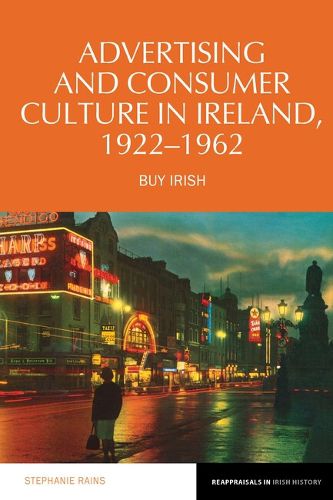Readings Newsletter
Become a Readings Member to make your shopping experience even easier.
Sign in or sign up for free!
You’re not far away from qualifying for FREE standard shipping within Australia
You’ve qualified for FREE standard shipping within Australia
The cart is loading…






This book explores advertising and consumer culture as key aspects of everyday life and national culture in twentieth-century Ireland. It makes a particular argument that the presence of anti-materialist rhetoric in some parts of Irish public life after Independence has obscured the existence of a lively consumer culture throughout the period, as evident in the many advertisements which supported Irish newspapers and magazines, the jingles broadcast on Irish radio, and the neon advertising signs and billboards on Irish streets. The book focuses on the development of the advertising industry itself, and the sophisticated ways in which it worked to associate consumption with national pride. It also considers the advertising of Irish homes and home appliances as an important focus of consumption, and the targeting of Irish women as the principal consumers in those homes, as well as publicity stunts and advertising in public space, and the form and style of commercial broadcasting and sponsored programming from the earliest days of Irish radio. It finishes with an examination of the opposite extremes of consumer abundance displayed in the annual Christmas advertising, as opposed to the consumer culture response to shortages during World War Two.
$9.00 standard shipping within Australia
FREE standard shipping within Australia for orders over $100.00
Express & International shipping calculated at checkout
This book explores advertising and consumer culture as key aspects of everyday life and national culture in twentieth-century Ireland. It makes a particular argument that the presence of anti-materialist rhetoric in some parts of Irish public life after Independence has obscured the existence of a lively consumer culture throughout the period, as evident in the many advertisements which supported Irish newspapers and magazines, the jingles broadcast on Irish radio, and the neon advertising signs and billboards on Irish streets. The book focuses on the development of the advertising industry itself, and the sophisticated ways in which it worked to associate consumption with national pride. It also considers the advertising of Irish homes and home appliances as an important focus of consumption, and the targeting of Irish women as the principal consumers in those homes, as well as publicity stunts and advertising in public space, and the form and style of commercial broadcasting and sponsored programming from the earliest days of Irish radio. It finishes with an examination of the opposite extremes of consumer abundance displayed in the annual Christmas advertising, as opposed to the consumer culture response to shortages during World War Two.